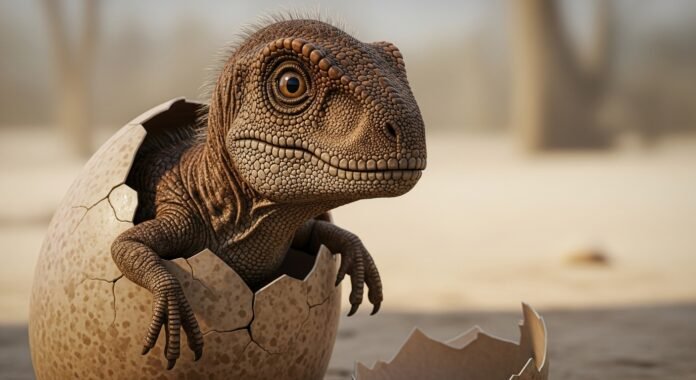A Rare Glimpse into the Late Cretaceous Era
Paleontologists in Argentina have uncovered a remarkably preserved dinosaur egg, estimated to be around 70 million years old, in the country’s Patagonia region.
The discovery has stunned scientists due to its near-pristine condition, offering a rare and vivid glimpse into life during the Late Cretaceous period.
The fossilized egg was found on the dusty plains of Río Negro, located in northern Patagonia. Measuring similar in size and shape to a modern ostrich egg, it appears almost freshly laid despite dating back tens of millions of years.
Rare Find from a Carnivorous Dinosaur
Experts believe the egg likely belonged to a Bonapartenykus, a small carnivorous theropod that once roamed the region. According to researchers, this is one of the most intact dinosaur eggs ever discovered in South America.
“Eggs from predatory dinosaurs are exceptionally rare,” said Gonzalo Muñoz, a paleontologist at the Argentine Museum of Natural Sciences. “These species were fewer in number compared to herbivores, and their eggs were thinner and more fragile. Finding one so perfectly preserved after millions of years is extraordinary.”
Previous excavations in Patagonia have uncovered fossilized eggs, but few have survived in such excellent condition. Initial studies suggest that this specimen might even contain traces of embryonic material inside. Researchers plan to conduct advanced imaging scans to determine whether any preserved remains are present within the shell.
A Window into Prehistoric Patagonia
The discovery was made during Cretaceous Expedition I, an ongoing research project exploring ancient ecosystems in northern Patagonia. Alongside the dinosaur egg, scientists also found mammal teeth and snake vertebrae nearby — evidence that the area may once have served as a nesting ground during the Cretaceous era.
Footage shared from the site shows team leader Federico Agnolín spotting the egg lying on the ground surface. In a video posted to Instagram, Agnolín’s excitement is clear as he carefully examines the fossil. The caption noted that the find may represent the first of its kind in South America, and that multiple eggs were recovered in a cluster.
Next Steps for Study
The egg and accompanying fossils have been transferred to the Argentine Museum of Natural Sciences for detailed analysis. If embryonic tissue is confirmed inside, experts say the discovery could become a milestone in South American paleontology, offering new insights into dinosaur reproduction and developmental biology.
“This kind of preservation gives us a direct connection to the past,” Muñoz said. “It helps us understand how these creatures reproduced, nested, and adapted to their environments.”
The find has sparked global scientific interest, with researchers around the world eager to see what further analysis will reveal.



